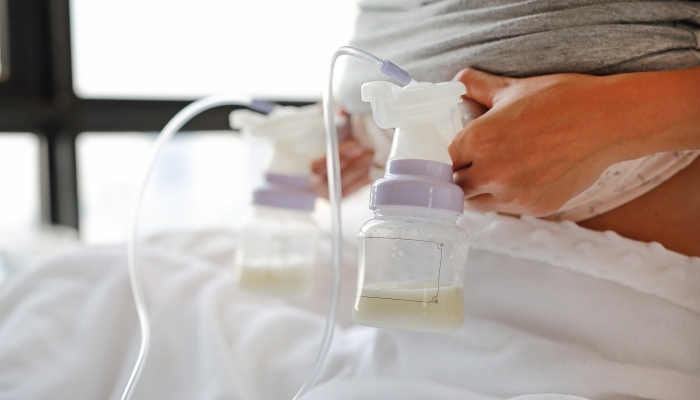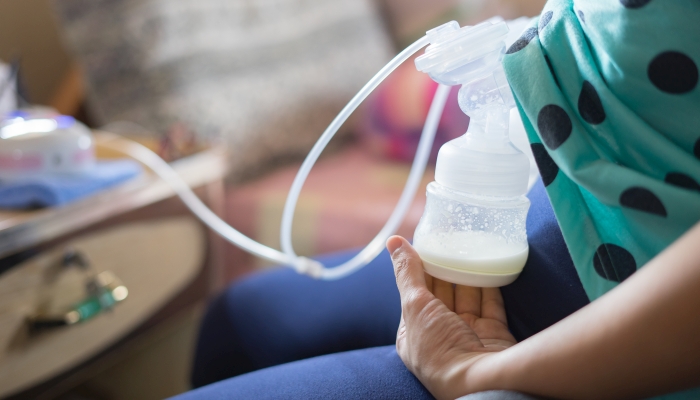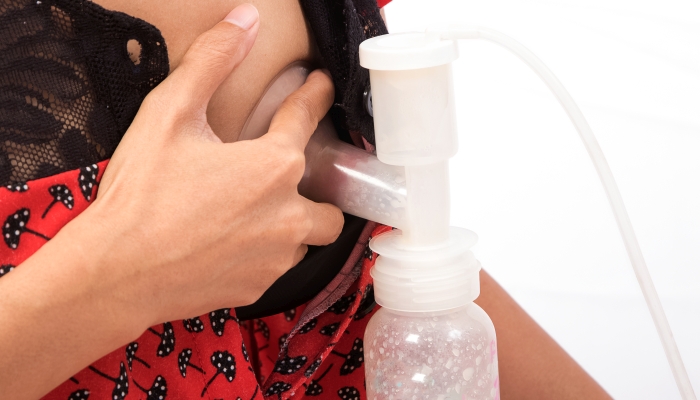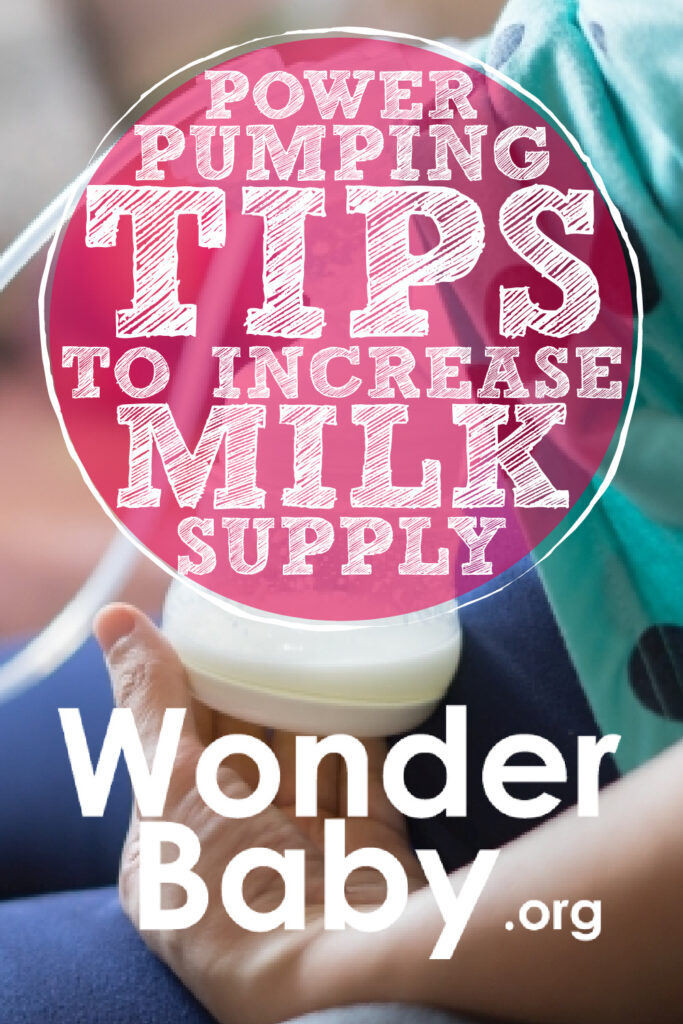Power Pumping Tips to Increase Milk Supply

- In power pumping, moms use a breast pump to mimic cluster feeding.
- Power pumping is a fairly simple process, and you’ll likely find your rhythm and routine.
- For some moms, power pump sessions increase their milk production within as little as 48 hours.
Mothers of nursing infants often have concerns about milk supply. You might find yourself wondering if your baby is getting enough nutrients. Or maybe you’re concerned that your baby isn’t putting out enough wet diapers during the day.
Moms who find they have a low milk supply might feel frantic and desperate to increase their supply to ensure their baby gets enough. They might even feel like they’re failing if they can’t provide enough.
You should know that a low milk supply is a common occurrence in nursing mothers. It is by no means a measure of your success as a mother. Take a deep breath and remind yourself that caring for a little one is a lot of work, and your body is working hard too!
Take hope, knowing there are many things you can do to increase your supply. Power pumping is one of these!
Power pumping is a method used to increase milk production in nursing mothers. This simple technique works with your body’s natural rhythms to increase supply. It’s been used with great success by many mothers and won’t harm your baby.
Curious about how to start power pumping to increase supply? These tips will help you start power pumping right away with confidence and ease.
What Is Power Pumping?
Power pumping might sound like some kind of gym exercise, but it’s actually referring to pumping milk, not weights. In power pumping, moms use a breast pump to mimic cluster feeding. This method is also called cluster pumping for that reason.
Moms who power pump will pump several times over an hour or two. Breaks are taken in between pumps to let the breasts rest. The power pumping sessions are repeated daily until results are seen.

Does Power Pumping Really Increase Milk Supply?
You might be wondering if this will truly increase your milk supply. It sounds easy enough, but no one wants to waste their time pumping only to be disappointed with the results.
Well, according to many women, yes it does. For some, the sessions increase their milk production within as little as 48 hours. For others, it may take up to a week.
However, this of course doesn’t guarantee it will work for every mom. But with little to no risks to you or your baby, it’s worth a try.
How does power pumping increase milk supply?
Power pumping increases the milk supply naturally by mimicking a baby who is cluster feeding. Each time a baby feeds, the sucking triggers a prolactin release. Prolactin is the hormone responsible for milk production.
This means, that the more your baby breastfeeds, the more breast milk you will likely produce. Power pumping sessions hyper-stimulate this hormone production. The frequent pump sessions in a short amount of time call for more milk production.
So when a mom power pumps for several days in a row, the body starts to think the baby is demanding more milk. The increased demand causes prolactin levels to increase, resulting in more milk for the baby.
A 2020 study by Ru, et al backs up the science behind increased pumping and milk production. This study found that mothers of preterm infants who exclusively pumped at least 6 times a day were able to maintain adequate milk supplies for their babies. The pumping increased their milk supply to the baby’s needs, just as breastfeeding would have.
When to Consider Power Pumping
If you are experiencing a milk supply shortage, power pumping is a good option to try. Alternatives for increasing your milk supply include supplements or medication. However, these can come with side effects like nausea, headaches, or other unwanted effects.
Power pumping poses no threats to you or your baby. The only drawback is the time it takes to set aside for power pumping sessions.
If you’re unsure if you’re making enough milk for your baby, a talk with your doctor or a lactation consultant will help. These are also signs of decreased supply to watch for in your baby:
- Your baby is very sleepy or lethargic
- Your baby has pink, red, or very dark urine and less than 6 wet diapers a day (After 5 days old)
- Your baby is showing signs of hunger when breastfeeding (Baby latching and unlatching repeatedly and crying)
- Your baby isn’t gaining weight
Who shouldn’t try power pumping?
Power pumping should not be used by moms with an adequate breast milk supply. If your baby is producing enough wet diapers and gaining weight, there is no need to produce more milk.
If you power pump when there isn’t a shortage, your breasts could end up with an oversupply. This can be very uncomfortable and might also lead to breast engorgement. Breast engorgement can also lead to a clogged milk duct if not relieved.
Moms with an adequate supply should rely on their own baby’s natural rhythms to stimulate production as needed. Your body will naturally adjust to your child’s needs as they feed.

Your Guide to Power Pumping
If you’re ready to power pump, this guide will get you started in no time. Power pumping is a fairly simple process, and you’ll likely find your own rhythm and routine. These suggestions are a good starting place until you find what works for you.
How long does it take to do power pumping?
When you begin to power pump to increase your milk supply, a 1-hour session is all you need. Any longer might cause sore nipples. This session can be repeated up to two times daily.
During a typical power pump session, you will pump, take a break, pump again, take a break, and so on. Alternating between pumping and resting will keep your nipples from becoming sore.
If you do notice your nipples becoming tender when pumping, try a nipple cream for breastfeeding. These creams often work well for relieving sore nipples from pumping. Coconut oil is a good option as well for sore nipples.
There is no exact formula to a power pumping session, but as a start, you could try this power pumping session schedule:
- Pump for 20 minutes
- Rest for 10 minutes
- Pump for 10 minutes
- Rest for 10 minutes
- Pump for 10 minutes
Some moms choose to pump for 5 minutes on and then 5 minutes off for an hour. The timing is up to you. So long as you alternate between pumping and resting, it will work fine.
Can you power pump with a manual pump?
Though power pumping with a manual pump is possible, it is not recommended. Manual pumps are often hard to use for long periods. Your hand will likely get tired before the session is over.
An electric pump will allow you to rest while the pump does the work. Electric pumps might even extract more milk than you could have manually.
How often should you do power pumping?
Power pumping can be repeated up to twice a day until you see results. This will likely depend on your schedule. Some moms find it hard to power pump more than once a day.
Though it might not seem like much, even just an hour a day will likely make a difference in your breast milk supply.
What is the best time of day to perform power pumping?
Some moms find that power pumping in the morning when their supply is high works best. Others prefer to wait until the evening when the baby is in bed. Find a time that works best for you and that doesn’t add extra stress to your plate.
Should you keep power pumping if no milk is coming out?
You might find that your breast becomes empty when you start to power pump. This is okay. Your goal is to pump until you feel a letdown.
Don’t worry about how much comes out. If little to no milk is released after a letdown, try just pumping for 5 minutes and then resting. The extra demand will help your body begin producing more milk in the coming days to keep up.
If after one week of using this method, you still aren’t seeing an increase, it might be time to try another method to increase your supply.
How many ounces should be pumped every session?
The ounces of breast milk isn’t important to focus on during a power pumping session. Instead, focus on pumping until there’s a letdown and at least through the initial release. You’ll likely notice you are pumping more ounces as the days go on.

Benefits of Breastfeeding for Both Mothers and Babies
We know that trying to increase your milk supply can feel like a lot of work. It’s normal to feel like giving up on breastfeeding.
Just remember, the benefits of breastfeeding are numerous. It’s worth the work if you’re able to get a steady supply going. Some of the benefits for your baby include:
- Stronger immune system
- Fewer tummy troubles
- Fewer colds and viruses
- Lower rate of ear infections
- Lower risk of Sudden Infant Death Syndrome (SIDS)
- Less likely to develop allergies or eczema
- Lower risk of childhood cancers
- Lower risk of obesity
There are also benefits for the mother. These include:
- Lower risk of ovarian and breast cancer
- Lower risk of type 2 diabetes
- Faster weight loss
- Reduction of uterine bleeding after birth
Common Causes of Low Milk Supply
There are many reasons your supply of milk can decrease or not produce enough. These include:
- Using hormone birth control
- Hormone imbalances
- Not breastfeeding often enough
- Taking certain medications
- Improper latches, such as lipstick nipple latch, or a weak suck
- Stalling feedings with a pacifier
Sometimes a simple adjustment to any of these factors can make a difference in your breast milk supply.

Related Posts

Breastfeeding, Sleep
Sleep and Breastfeeding: A Comprehensive Guide for Nursing Moms
Many people assume breastfeeding and sleep training don’t go together, but it is possible to help your baby sleep better while continuing your breastfeeding journey.

Breastfeeding
Comfort Nursing: Pros, Cons, and How to Stop
Find out what comfort nursing is, when should you worry about it, and how to stop or limit your baby's comfort nursing (especially at night!).

Breastfeeding, Product Reviews
5 Best Breastfeeding Chairs for Nursing Moms of 2023
Whether you want a gentle rock, a smooth glide, or a cozy cuddle to soothe your baby to sleep, you’ll have your pick of the best breastfeeding chairs on the...